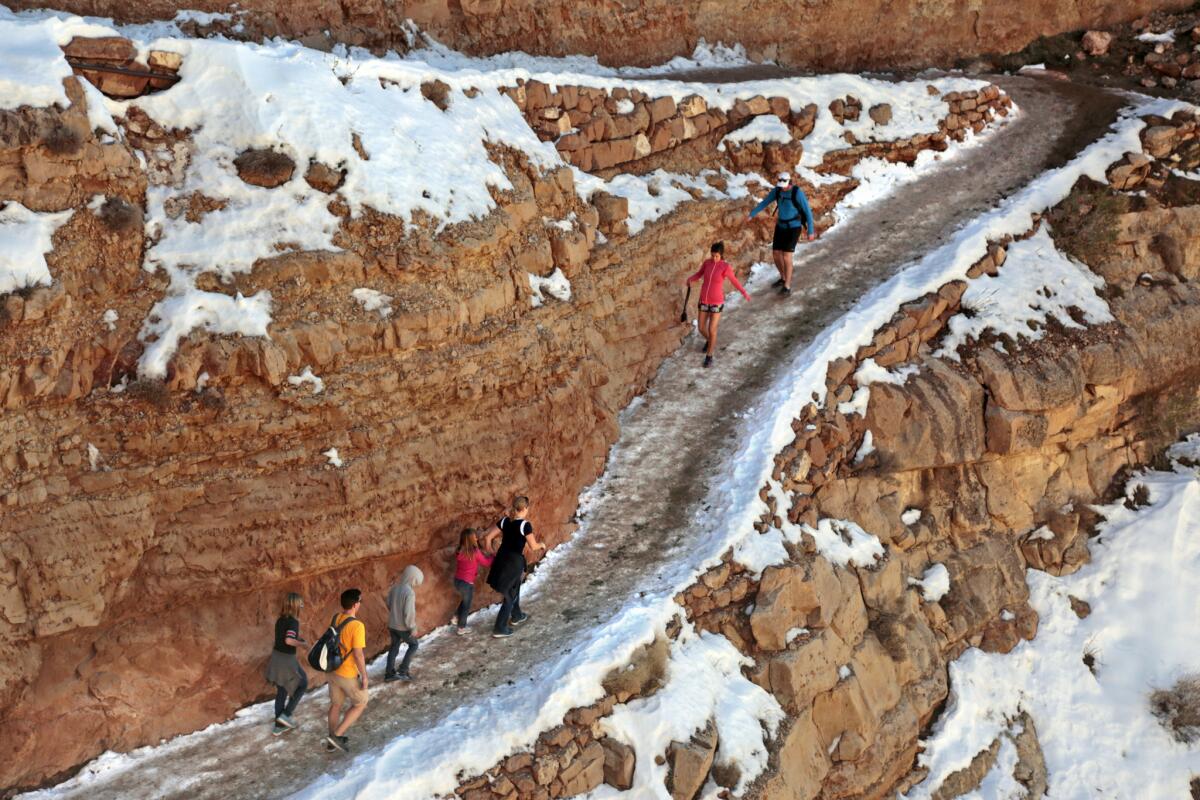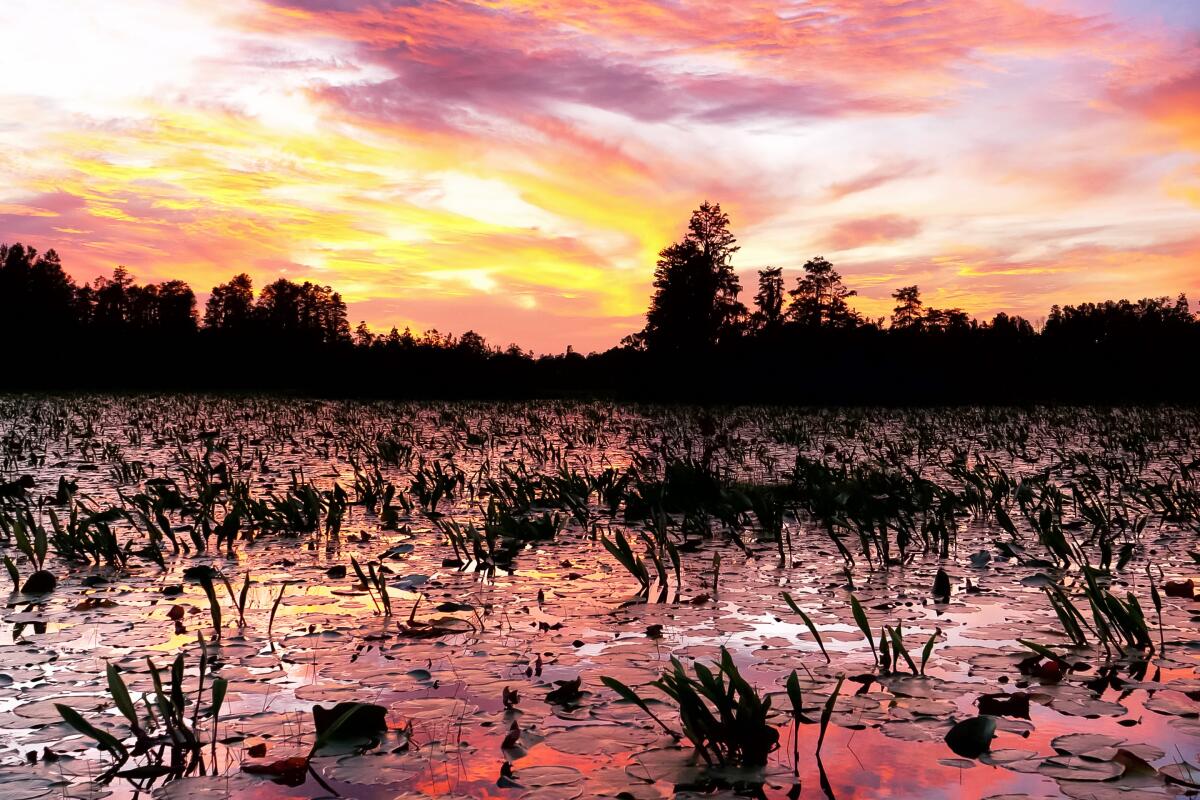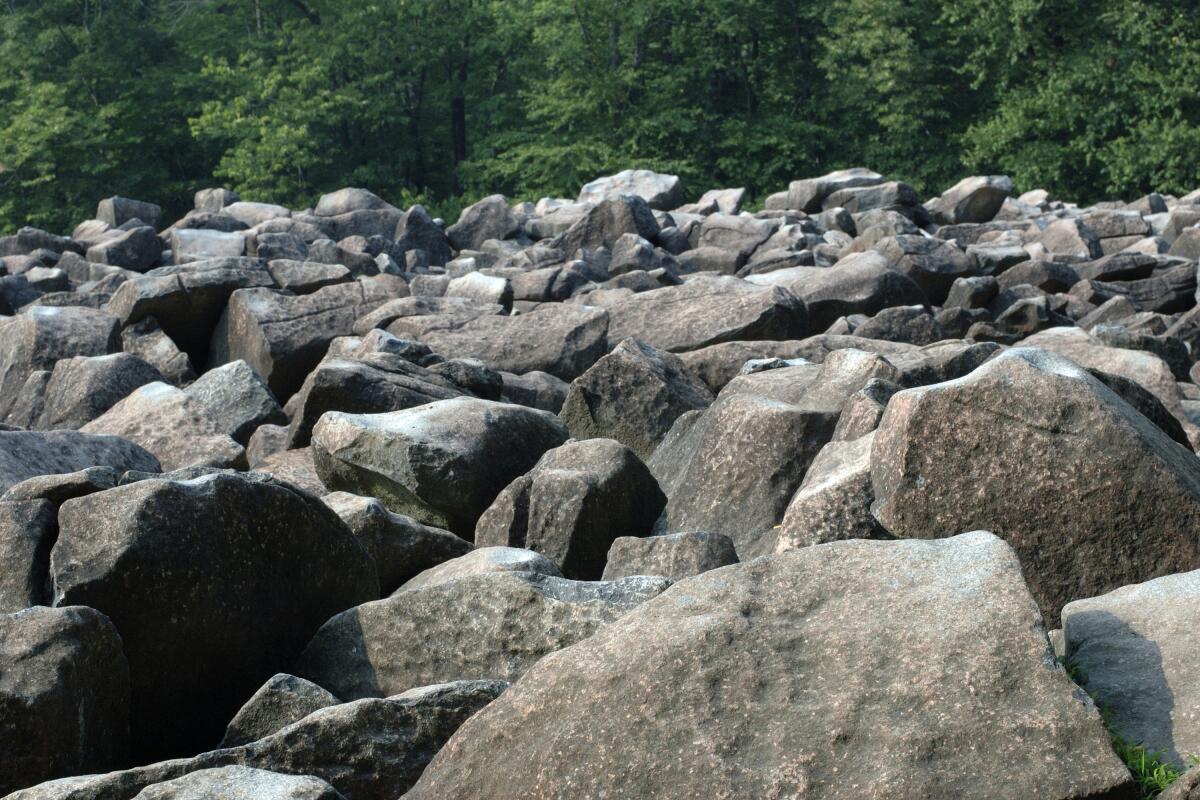The latest from these corners of AZ, GA, NV and PA is ... nothing. It’s awesome

- Share via
There’s no news today from four crucial corners of Arizona, Georgia, Nevada and Pennsylvania. Which is good.
These are natural wonders, not voting precincts, and they seem safe from all the ballot-counting, victory-claiming, lawsuit-threatening tumult of this week. Are they entirely free of politics? No. In fact, you could argue that U.S. climate change policy will shape the prospects and landscape of the entire planet.
But these places look pretty solid as we search for stability on the horizon. I’ve been to two of them and look forward to seeing the others. I suggest we visit them now — a head trip, not a road trip — and take a minute.

In Arizona, home to low turnout of late: At Grand Canyon National Park, a winter storm was due this weekend. The underlying scene — a mile-deep gorge that’s about 10 miles across — dates to the days preceding Joe Biden’s youth, 5 or 6 million years ago. The park is famously busy, but rangers say its slowest months are November through February when the red rock is often frosted with ice and snow.

In Georgia, an undrainable swamp: The Okefenokee Swamp Park is part of Okefenokee National Wildlife Refuge, a 630-square-mile area at the headwaters of the Suwanee and St. Mary’s rivers. In the 1890s, some people tried to drain it to no avail. It remains home to alligators, storks, shrews, possums, newts, three kinds of treefrogs, five kinds of skinks and so many species of snakes (37) that each of Georgia’s electors could take two as pets and there would still be five snakes left.
Scientists say Okefenokee is the largest intact freshwater wetlands in North America. The park features an exhibition about cartoonist Walt Kelly, who lived nearby, created the comic strip “Pogo” and coined the phrase, “We have met the enemy and he is us.”
In Nevada, the quest for clarity in a sea of blue: Lake Tahoe is beloved for many reasons, including the sun-bleached boulders and inviting waters along its shores in California and Nevada. People also treasure its clarity, which has decreased over the last 50 years but remains impressive and is usually best in winter. Last year a crew from UC Davis concluded that on an average day, an observer could see 62.7 feet through the lake’s waters. (To test, they gradually lower a white disk and stare hard, like Donald Trump facing down an interviewer.)
The lake’s famously azure waters cover 193 square miles — a vast area you might consider bluer than any constituency in Nevada or California.

In Pennsylvania, Erie margins and ringing rocks: If you’re making a mental pilgrimage to Pennsylvania, you could start with Presque Isle State Park, whose beaches flank Lake Erie. Or you could hike in Pine Creek Gorge (a.k.a. the Pennsylvania Grand Canyon). But if you’re looking to drown out the din of politics, your place is Ringing Rocks County Park in Upper Black Eddy, Bucks County, about 60 miles north of Philadelphia. And you’ll need to bring a hammer.
You make your way to the boulder field, choose a rock or two, and swing that hammer against them. The resulting sound could be the ringing of a bell or maybe a rustic xylophone. The boulder field is basically an 8-acre percussion instrument. Musicians have tried it for decades, and the Youtube videos are mesmerizing. Watch. Listen. Let go.
More to Read
Sign up for The Wild
We’ll help you find the best places to hike, bike and run, as well as the perfect silent spots for meditation and yoga.
You may occasionally receive promotional content from the Los Angeles Times.







